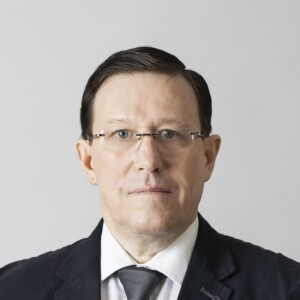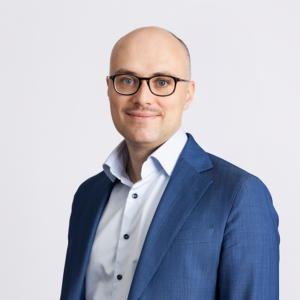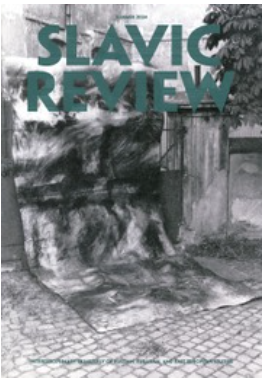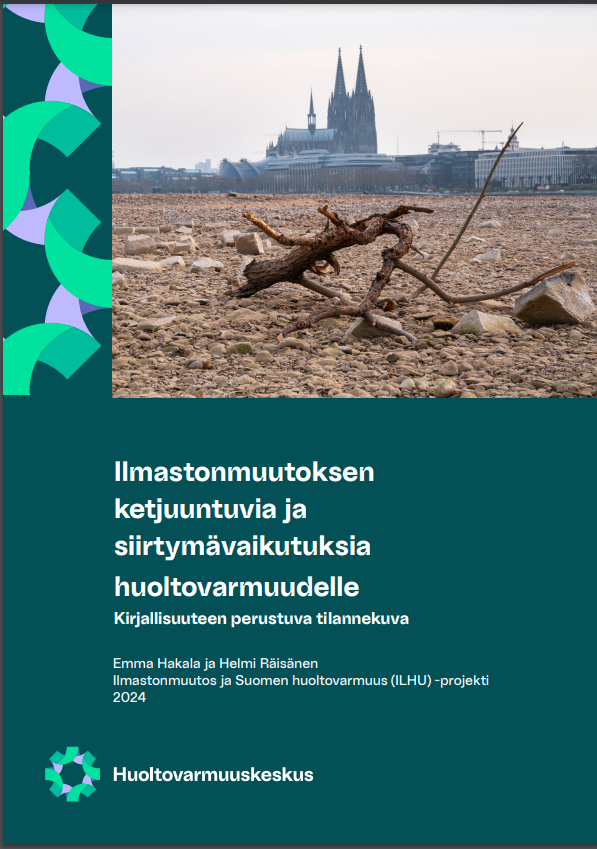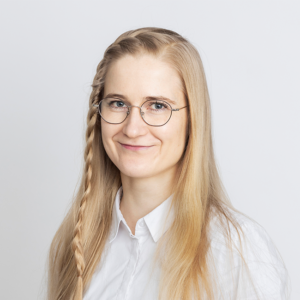Venäjän taloudellinen ideologia perustuu yhä vahvemmin sen kansallisille turvallisuusintresseille talouden modernisaation tai vapaakaupan sijaan. Venäjä käyttää energiavarantojaan kasvattaakseen vaikutusvaltaansa lähialueillaan ja suhteessa EU:hun. Tätä voidaan pitää geoekonomisena toimintatapana.
Venäjän hallinnon käyttämä kriisivaihde, maan sisäinen mobilisaatio ja vastakkainasettelu lännen kanssa korostavat, miten strategiset ja geoekonomiset tavoitteet ohittavat Venäjän politiikassa kaupalliset näkökohdat. Valtiojohtoisissa energiahankkeissa tärkeintä ei ole niiden kannattavuus, vaan se, pystyykö maan hallinto hyödyntämään niitä geostrategisten tavoitteidensa saavuttamiseen ja oman valtansa lujittamiseen.
Esimerkiksi Nord Stream II -kaasuputkeen liittyvien erimielisyyksien ansiosta Venäjä saa EU:n näyttämään heikolta ja hajanaiselta. Hanke nakertaa Saksan solidaarisuutta muita EU-maita kohtaan ja heikentää Ukrainan asemaa maakaasun kauttakulkumaana, mikä vaikeuttaa EU:ssa yhtenäisen linjan noudattamista Ukrainan kriisin suhteen.
Fennovoiman ydinvoimalahanke puolestaan osoittaa, miten Venäjän kanssa tehtävissä suuren mittakaavan energiahankkeissa on vaarana, että Venäjän noudattama geoekonominen toimintaperiaate, jossa poliittiset ja taloudelliset tavoitteet sekoittuvat toisiinsa, omaksutaan myös hankkeen kohdemaassa – tässä tapauksessa Suomessa.
EU:ssa tiedostetaan kyllä, että Venäjä pyrkii lyömään kiiloja EU-maiden välille. Monet kuitenkin näkevät taloudellisen keskinäisriippuvuuden aina positiivisena asiana, vaikka se voi johtaa strategiseen riippuvuussuhteeseen. EU:n ja sen jäsenmaiden tulisi tiedostaa Venäjän strategiset pyrkimykset energiasektorilla, vastata niihin päättäväisesti ja luoda sitä kautta tilaa myös aidolle kaupalliselle yhteistyölle.
While a number of scholars have analysed how Russia exercises its control over energy streams to Europe as a means of enhancing its foreign policy influence and regional power status, the argument whereby this energy trade and investment is apolitical, and merely a commercial enterprise which always benefits both sides, is still often repeated by politicians, investors and analysts alike in the European discussion. In 2014 and 2015 this reasoning prevailed, for example, in the context of pipeline politics concerning the South Stream and Nord Stream II projects, as well as nuclear investments in Finland and Hungary.
How to explain this dissonance? While the European tradition of promoting free trade and liberal interdependency may well block the view of some politicians and stakeholders, we suggest that Russia’s use of its energy resources should be analysed as energy geoeconomics, which drives political wedges at the EU level and within the member states. The proponents and benefactors of Russia-led projects tend to argue that they are commercial and apolitical, while the opponents make the case for the role played by a broader geostrategy.
The objective of this Briefing Paper is to provide an overview of the current Russian energy projects in the EU and to analyse the domestic drivers for geoeconomic projects. The paper argues that although the need for commercial realism is strong in the era of economic difficulties, the Russian leadership is committed to keeping energy flows in the servitude of strategic and tactical objectives. This poses distinct challenges for the EU and many of its member states. However, by recognising the state of affairs, the EU can increase its unity in external energy policy, control some of the political risks, and build a more resilient energy system.
The rise of energy geoeconomics
Geoeconomics is a rising paradigm for analysing foreign and economic policies of states and the evaluation of their national interests. The concept of geoeconomics was originally coined by Edward Luttwak to criticise the assumptions of interdependence doing away with strategic conflict after the end of the Cold War. In geoeconomics, the motivation of the actor is strategic or ‘geopolitical’: broadening and deepening the sphere of political influence and getting others to do what they would not otherwise do.
Both analysts and policy-makers seem to be much more preoccupied with negative forms of geoeconomics (the proverbial ‘sticks’) compared to positive geoeconomics (the ‘carrot’). In the field of energy geoeconomics, the sticks include price increases, explicit and implicit threats of cut-offs, or strong-arming the relevant businesses of foreign companies within the geoeconomically active country.
The carrot, on the other hand, is easier to conflate as commercial activity and mutual economic interest. Country A may induce the target to do what Country A wants by granting the target a certain amount of money – for example in the form of price cuts for energy, loans, side payments, or asset swaps. However, the operation can be viewed by the target as a ‘reward’, and the target might be willing and happy to follow Country A’s instructions as long as it receives the reward. This relationship can thus be viewed as a positive sum – although the positive sum interpretation does not take into account the political externalities caused by reduced sovereignty.
Under President Vladimir Putin’s rule, Russia’s economic ideology has been increasingly based on national security interests. For Russia, a country with an extensive natural resource base, the geoeconomic modus operandi invariably involves energy trade. Russia is among the world’s biggest energy exporters, but without its energy products, the value of Russian exports is smaller than that of Poland’s.
Russia’s geostrategy includes the use of the control of energy streams to Europe as a means of enhancing its aspired great power status. This is also explicitly stated in key policy documents, such as the Energy Strategy of 2009, which states that “[t]he aim of Russia’s energy policy is the most efficient use of natural energy resources and the potential of the energy sector for sustainable economic growth, improving the quality of life of the population and to promote foreign policy positions”.1
Domestic developments: the crisis mode
As a result of the downturn in its economy, the Russian regime has switched to a crisis mode to justify several exceptional measures in its foreign and domestic policies. The regime is unwilling and unable to reform the Russian system, and therefore it instrumentalises the crisis mode to shift attention away from domestic problems to external confrontation.2
Vis-à-vis energy policy, this means that Russia’s commercial interests have become even more subordinate to its strategic goals, which support the leadership’s position domestically. To these ends, Russia’s energy policy is derived from internal developments that see the number of available strategic resources dwindling. The international stage is being utilised to secure the position of the Russian leadership.
Dividing the EU with energy is useful for Russia, as it portrays the EU as weak and disunited, one of Putin’s long-time catchphrases. It underscores Russia’s economic muscle and shows that Russia still has friends in Europe, even after the Ukraine conflict and heightened tensions. In addition, splitting the EU ranks enables Russia to negotiate on a bilateral basis and thus assume flexible rules and energy contracts that favour the supplier.
Persuasively, several analysts link the aggressive turns in Russian foreign policy operations to both the larger foreign policy context of “setting limits on the West” and Putin’s wider domestic political project for Russia.3 The regime’s tendency to favour a strategic view on energy resources has increased, as the domestic policy-making has shifted towards a patriotic, anti-liberal and anti-Western project. Russia’s updated National Security Strategy of 2015 echoes a classic Luttwakian view on geoeconomics by noting that “the growing influence of political factors on economic processes and also attempts by individual states to utilise economic methods and instruments of financial, trade, investment, and technological policy to resolve their own geopolitical tasks are weakening the stability of the system of international economic relations”.4
Within the Russian leadership, the number of economic liberals favouring the commercial over the strategic has diminished in recent years. It is credible to assume that the trend towards geoeconomic behaviour is not likely to wane in the foreseeable future. Despite the current difficulties, Europe will remain as Moscow’s main strategic focus. Russia is tied to Europe with its gas and oil infrastructure as well as other economic links, and the ‘Pivot to Asia’ currently seems like an empty shell with limited commercial prospects, as acknowledged by some Russian analysts as well.5
The ways in which business interests have been downplayed at the expense of geoeconomic ones, for example in the Ukrainian gas crisis of 2006 and 2009, manifests Russia’s priorities in energy trade. The order of priority is paradoxical: in the current economically gloomy situation, it would be even more important than before for Russia to pursue commercial interests. The current Ukraine crisis is a case in point: Gazprom has effectively lost most of its largest export market.
The strategic sectors of the Russian economy are controlled by competing elite groups formed around the giant state-owned corporations and different branches of the security services and the army. Ultimately, the Russian leadership sees the oligarchs as merely looking after state property, but not actually owning anything in their possession. Greater goals and the strategic value of any given resource override corporate or personal economic interests, as noted by a long-time member of Putin’s inner circle, Vladimir Yakunin.6
The main driver and currently the main shackle of the Russian economy is obviously oil. The Russian budget is calculated in relation to the oil price, and when the budget’s oil price estimate does not match reality, the budget is amended. This took place in 2015 and will happen again in 2016. While oil is by far the most important driver of the Russian economy, Moscow has no direct means of influencing the price of the global commodity.
The quickly deteriorating position of Rosneft demonstrates how one of Russia’s strongest economic pillars has rapidly turned into an asset needing special attention and support measures. During the current low oil prices, Moscow has few opportunities to employ its oil exports as geoeconomic carrots for broader strategic purposes. It is for this reason that we next turn our attention to natural gas and nuclear energy exports.
Gazprom’s pipeline roulette
Since the cancellation of the South Stream pipeline in December 2014 due to a political and legal pushback by the European Commission in response to the Ukraine crisis, Russia has continued to pursue pipeline projects of a geoeconomic nature with the Turkish Stream and Nord Stream II projects.
The Turkish Stream is essentially a plan to reroute the abandoned South Stream pipeline to Southern and Eastern Europe through Turkey. Similarly to its predecessor, the project seems unlikely to comply with existing EU legislation, and is expected to face similar concerns and resistance from the EU. Furthermore, the project is currently caught up in Russo-Turkish tensions over the Syrian war, and the downing of a Russian fighter in November 2015 by Turkey in particular.
In September 2015, Gazprom announced the Nord Stream II project with a consortium of five European companies: BASF, e.ON, ENGIE, OMV and Shell. The plan is to follow the existing Nord Stream route through the Baltic Sea, bypassing the Baltic states, Poland and Ukraine, with a capacity of 55 billion cubic metres of gas per year, which would double the capacity of the existing Nord Stream line.
There are several reasons to believe that geoeconomic motivation is at play vis-à-vis the Nord Stream II project. The current capacity of the existing Nord Stream gas pipe is severely underutilised, operating at only 50 per cent of its capacity, and no growth is expected in the European gas market to accommodate an increased supply.7 In order to fill both Nord Stream I and II after 2019, the existing landlines through Ukraine and Poland would be subjected to much less use. Underwater pipelines are notoriously expensive, and the price tag for Nord Stream II has been estimated at around €10 billion.8 As a basic commercial principle, it is always more profitable to use existing gas infrastructure than to build new underwater gas pipelines.
Firstly, Russia stands to increase its influence in Ukraine, depriving the country of revenue and its key lever against Moscow as a transit state between Russia and the EU markets. This would also leave Ukraine exposed to price increases and cut-offs, as Gazprom could switch off supplies to Ukraine without inconveniencing its EU clients. Secondly, Russia can re-increase its influence in Germany, potentially weakening Berlin’s solidarity within the EU ranks. This would take place by increasing the market share in Germany, as well as giving Germany the key transit country status to European markets. Here, Nord Stream II would act as a carrot-oriented ‘wedge strategy’, creating divergent pressures on EU members and thus weakening the cohesion of the EU.
According to the EU’s Energy and Climate Commissioner, Miguel Arias Cañete, the EU has legal competence to accept or reject Nord Stream II. Germany has stated otherwise, noting that the issue is apolitical, as the European partners of Nord Stream II are private companies aiming for profit, with no governmental involvement or advocacy. The project was opened for political-level discussion at the European Council in December 2015, with Poland and Slovakia leading a group of nine Central and Eastern European countries protesting against it.
The plan to build Nord Stream II raises several political problems for the EU. Firstly, it undermines the stated goals of the Energy Union, namely diversification of natural gas sources and increasing competition, and in this regard, arguably, also the external energy security of the EU. For example, Commissioner Cañete has concluded that Nord Stream II would “increase Europe’s dependence on one supplier” and “increase Europe’s dependence on one route”.9
Secondly, and more pressingly, it creates a substantial policy incoherence vis-à-vis the Ukraine crisis. The EU is committed to backing Ukraine both politically and economically. Nord Stream II, in contrast, would erode Ukraine’s position as a transit state, compromising its only real political leverage in Moscow, and resulting in economic losses of circa $2.2 billion in annual revenue. If Nord Stream II is built, the EU and Germany would effectively end up supporting Ukraine on the one hand, and weakening it on the other.
Rosatom’s radiating influence
Russia’s strategy in nuclear exports is to provide an inexpensive option in the post-Fukushima world, where nuclear power is often overlooked. Unlike most of its international competitors, Russia’s Rosatom is a wholly state-owned enterprise. Therefore, it does not necessarily need to be profitable if it allows the Russian government to pursue other interests, including geoeconomic ones.
A large proportion of Russia’s foreign nuclear projects are taking place in countries with strategic importance for Moscow, and Russia is claimed to be on the front foot to win contracts before China enters the race for market shares.10 In its export strategy, Rosatom aims at long-term “build-own-operate” agreements that combine construction, financing, infrastructure, know-how and fuel supply in a “complete solution”, as the company itself puts it.
Russia currently has two ongoing nuclear projects in EU member states: the expansion of the Paks nuclear power station in Hungary and the ground-up development of the Fennovoima nuclear power plant in Finland.
The Paks project is facing obstacles from the European Commission. The Commission’s claims about the Hungarian government’s violation of EU competition laws by awarding exclusive deals to the Russian party are in all probability well grounded, but the matter is also highly political. Russia wishes to deepen its ties with Viktor Orbán’s government to employ its geoeconomic wedge strategy in the EU, whereas Brussels, similarly as with the South Stream case, wants to avoid this. This politicised love triangle will decide in which format the Paks project will continue.
The Fennovoima project in Finland is currently bringing Moscow better news. After lengthy negotiations, the political conditionality of 60 per cent EU-based ownership, an obscure episode with a Croatian financer which turned out to be a Russian dummy company, and several divisive political decisions in Finland, the project has now been approved by both the Finnish parliament and the government coalition.
In the Fennovoima project, one of Rosatom’s main objectives is widely considered to be the attainment of a good reference case in the west – especially with a seal of approval from the Radiation and Nuclear Safety Authority of Finland, STUK. The Finnish authority has an international reputation for being strict and reliable, and Finland has a notable track record in the cost-effective and safe use of nuclear power. Therefore, STUK’s approval of the construction of the plant would give Rosatom a credible selling point for its future export projects around the world.
The Fennovoima power plant is made possible by the financing and investment share of Rosatom, which, as noted above, might not be primarily looking for profits. As is typical in geoeconomic projects, the ‘carrot’ is a mixture of both commercial and strategic interests, and may be framed in both terms, with proponents emphasizing the commercial side (‘reference case for Rosatom exports’) and opponents the strategic aspect (‘creating dependencies on Moscow’).
An interesting side note of the Fennovoima project is the role of the Finnish state-majority energy company Fortum, which has invested several billion euros in the electricity and heat business in Russia’s Ural region. In an eleventh-hour decision, Fortum decided to take part in Fennovoima, thereby fulfilling the 60 per cent ‘domestic ownership quota’ set by the Finnish government. While what happened behind the scenes remains an unanswered question, Fortum stated publicly that it made the decision reluctantly, somewhat against its own interests.11
President Putin discussed the episode in his annual press conference in December 2015. Putin noted that “the partners of Rosatom, a company [Fortum] that has invested billions of euros in our [Russia’s] economy, has shown readiness to work together and assume the risks”. He also praised the Finnish parliament for taking an “unexpected” and “tough” decision to support the project despite “all the intrigues to sabotage this project”12 – using a phrase that was popular in Bolshevik parlance.
This goes to show that nuclear power exports in general, and the Fennovoima project in particular, are firmly on the Russian president’s agenda. While nuclear power exports have both commercial aspects and modernising arguments supporting them, their strategic and political value is also undeniable.
The Fennovoima project demonstrates how geoeconomic influence functions in practice. Fortum’s decision to take part in the Fennovoima project at least partly against its own will by setting aside its business priorities is a sign of how the geoeconomic system, in which political ends override economic ones, ‘trickles down’ to the countries that are on the receiving end of large-scale geoeconomic projects.
Conclusions
The natural gas pipeline and nuclear power projects discussed above demonstrate how Russia’s energy geoeconomics drives wedges in the EU as well as within the member states. Most importantly, while the EU has spoken with a stronger and more coherent voice during the conflict in Ukraine, and Germany has shown the ability to take the lead in EU foreign policy, the newfound relative EU unity and German leadership is likely to be compromised if Nord Stream II is built.
The wedge strategy element of the Nord Stream II pipeline project casts Germany in a different light, as a country that is driven by short-term economic self-interest, enjoying its privileged relationship with Russia, and insensitive to the EU’s collective security, diplomatic efforts and energy policy objectives. With the successful use of nuclear energy, on the other hand, Russia creates interests to uphold good relations with Moscow under all circumstances and gains political influence within the energy sector in the country in question for a time period spanning decades.
While some argue that the energy projects are apolitical, commercial ventures, others have used rather provocative terminology to describe Russian geoeconomics. Some analysts and politicians from Central and Eastern European countries have labelled Nord Stream II as threatening “Schroederisation”. They warn against German-Russian bilateral cooperation, which could make decisions with little regard for the interests of the smaller states.13 An analyst from Chatham House recently raised eyebrows by discussing “energy Finlandisation”,14 which may take place especially in small EU countries that do not have the necessary leverage to counterbalance Russia’s influence.
In order to handle the current, confrontational EU-Russia relations in strategic economic sectors, an increased awareness of geoeconomics in general, and a mixture of commercial and strategic motivations in particular, is needed. When analysing the security implications of energy, analysts should pay due attention to the ‘carrot’, not only to the ‘stick’. By making it harder for Russia to use its energy resources for political ends, such a policy response may actually induce the Kremlin to focus on the commercial side of its energy export policy.
Endnotes
1 ‘Energeticheskaya strategiya Rossii na period do 2030 goda’. Available at: http://www.infobio.ru/sites/default/files/Energostrategiya-2030.pdf.
2 Laine, Veera, Toivo Martikainen, Katri Pynnöniemi & Sinikukka Saari (2015): Zugzwang in slow motion? The implications of Russia’s system-level crisis. FIIA Analysis 6, The Finnish Institute of International Affairs: https://fiia.fi/en/publication/554/zugzwang_in_slow_motion/.
3 Snetkov, Aglaya (2015): ‘From Crisis to Crisis: Russia’s Security Policy under Putin’. Russian Analytical Digest 173,12 October 2015.
4 ‘Ukaz Prezidenta Rossiyskoy Federatsii ot 31 dekabrya 2015 goda N 683’. RG.ru, 31 Dec 2015: http://www.rg.ru/2015/12/31/nac-bezopasnost-site-dok.html.
5 See e.g. Krutikhin, Mikhail (2015): ‘Kitay deneg ne dast. Mozhno li spasti ”Silu Sibiri”?’. Slon.ru, 11 Aug 2015: https://slon.ru/posts/55009.
6 Reznik, Irina (2016): ‘A Fallen Russia Oligarch Sends Warning to Rest of Putin Insiders’. Bloomberg.com, 13 Jan 2016: http://www.bloomberg.com/news/articles/2016-01-13/afallen-russia-oligarch-sends-warning-to-rest-of-putin-insiders.
7 Honoré, Anouk (2014): The Outlook of Natural Gas Demand in Europe. Oxford Institute for Energy Studies, June 2014. Available at: http://www.oxfordenergy.org/wpcms/wpcontent/uploads/2014/06/NG-87.pdf.
8 On a related note, the price tags may also be among the reasons why underwater gas pipes are popular projects among the Russian elite circles, as massive infrastructure projects offer opportunities to pocket money in the process.
9 Commissioner Arias Cañete at the European Parliament Plenary:opening and concluding remarks, 7 Oct 2015. Available at: http://europa.eu/rapid/press-release_SPEECH-15-5797_en.htm.
10 ‘Russia: Exporting Influence, One Nuclear Reactor at a Time’. Stratfor.com, 7 Oct 2015: https://www.stratfor.com/analysis/russia-exporting-influence-one-nuclear-reactor-time.
11 The interim CEO, Timo Karttinen, admitted that participating in the project was not Fortum’s “target”, but it “enables the Fennovoima project to proceed within the timeline the Finnish government has set to the project”. See Fortum press release: ‘Fortum to participate in the Fennovoima project with 6.6 per cent share – TGC-1 restructuring negotiations in Russia still not concluded’. Fortum.com, 5 Aug 2015: http://www.fortum.com/en/mediaroom/Pages/fortum-toparticipate-in-the-fennovoima-project-with-66-per-centshare-tgc-1-restructuring-negotiations-in-russia.aspx.
12 ‘Putin: investitsii v stroitel’stvo AES v Finlyandii – pravil’noye resheniye’. RIA Novosti, 17 Dec 2015: http://ria.ru/atomtec/20151217/1343743383.html.
13 For example, the Estonian president, Toomas Hendrik Ilves, also referred to “Schroederizatsiya” when discussingthe Nord Stream II project in the Riga Conference in November 2015, see: https://www.youtube.com/watch?v=CrB2Pn996G0.
14 Gould-Davies, Nigel (2016): Russia’s Sovereign Globalization: Rise, Fall and Future. Chatham House Research Paper, January 2016: https://www.chathamhouse.org/publication/russias-sovereign-globalization-rise-fall-and-future.



